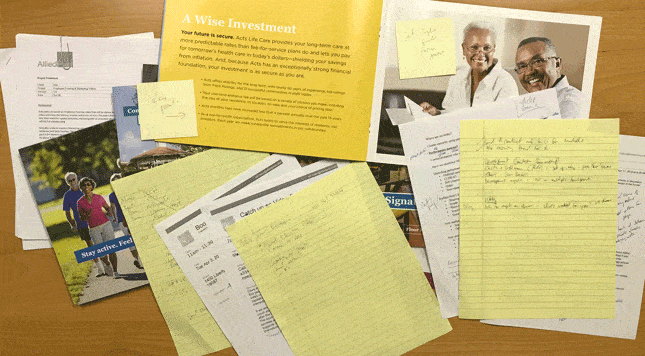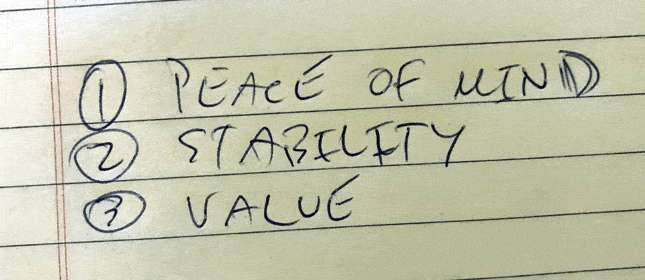As communicators, one of the basic things we have to know is what our story is really all about.
That’s more easily said than done. Way too often, stories get lost in a jumble of over-complicated, bloated, unfocused blahdie-blah-blah. How many videos have you seen that leave you wondering what the point was? As a communicator, that’s a lost opportunity and a waste of money.
It’s as if we are trying to say so much that we don’t really say much of anything at all. It’s the spaghetti on the wall syndrome — we just hope something sticks. But that’s no way to tell a story.
The best story is a simple one. A story that makes just one main point, clearly and poignantly. A story that cuts to the chase to deliver a laser-focused message.
So how do you make that happen? Here’s a plan.
1. Dump it all out
Start by literally spreading everything out on the table. (You may need a big table.) All your notes, reference materials, everything. Properly done, it looks like this:

Yes, it’s a mess. That’s ok. Next, get a nice big cup of coffee and review it all. Block out a couple of hours to do this and put your phone away so you can concentrate without interruption.
2. Find the broad themes
Inevitably as you digest all this stuff, key themes will begin to emerge. With a little practice, they may even pop into your head automatically. They will serve as the pillars of your story. Every bit of information from Step 1 should fit neatly into one of those buckets. How many should there be? As few as possible. You don’t want to get granular with this process. For a short-form video (under two minutes,) I’d suggest that you have no more than three main themes. If you are stuck with more, that’s a pretty good sign your story is getting too complicated. The best solution in that case is either (1) combine themes, or (2) break the story up into multiple videos.
The end result may look like this:

3. Make the connection
In this step, you’ll look for the commonality in the themes. This is the overriding truth that binds them together — and it’s the essence of your story.
It can be a challenge to arrive at it, so don’t get frustrated. It’s often a good idea to bring in some coworkers to brainstorm together. You may go through a number of iterations before you get to something that feels satisfying and genuine. Don’t stop until you get there.
The result may look like this:

Congratulations! You’ve identified the essence of your story. This will guide everything that follows — the words, images, everything. As an added plus, you now have a basic structure for your story. Going backward through the steps, you have a theme, supporting pillars and details. You have accomplished a lot.
Now you’re ready to write the script. We’ll get to that in another article.

P.S. Have a question about video? Let me know and I’ll try to answer it in an upcoming post.